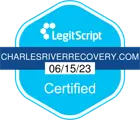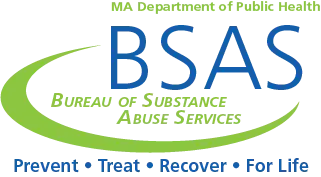Are Painkillers Safe to Take When Breastfeeding?
If you are a breastfeeding mother, you may be wondering if it’s okay to take painkillers while you’re breastfeeding. This is a hot topic as painkillers come in different varieties and strengths. Additionally, the things a mother ingests usually go into her milk supply. This article delves into a more detailed look at painkillers and their effects on the body.
What Are Painkillers?
Painkillers, or analgesics, are designed to reduce both mild and severe physical pain. Mild painkillers are typically available as over-the-counter medication. Stronger painkillers, however, are often available only through a doctor’s prescription.
Painkillers work by interacting with the body’s nervous system and altering the way the body responds to pain. Although the exact way painkillers work is still in debate, many scientists believe that painkillers bind to COX2 in our bodies. When you’re in physical pain, the COX2 protein releases chemicals known as prostaglandins. These chemicals send signals to your brain saying you’re in pain. However, when painkillers bind to the COX2 protein, they block the prostaglandins chemicals.
The Different Strengths of Painkillers
Painkillers come in different strengths, ranging from mild to strong. Here are some of the painkillers available on the market.
Nonsteroidal Anti-Inflammatory Drugs (NSAIDs)
Nonsteroidal Anti-Inflammatory Drugs (NSAIDs) are used to reduce inflammation and alleviate pain. Doctors usually prescribe them for arthritis, musculoskeletal disorders, or any pain that occurs after an operation.
NSAIDs can be either an over-the-counter medication or a prescription. Some examples of NSAIDs are:
- Ibuprofen (Motrin or Advil)
- Naproxen (Aleve)
- Aspirin
- Celecoxib or Celebrex, which is a COX-2 inhibitor
While NSAIDs are considered to be safe for the most part, there can be side effects, such as:
- Allergic reactions
- Stomach irritation and ulcers
- Kidney issues
- Cardiovascular risks
Acetaminophen (Paracetamol)
Acetaminophen, or paracetamol, is a mild pain reliever that is available as an over-the-counter medication. It is commonly used to alleviate pain and fever. Unlike NSAIDs, acetaminophen does not have anti-inflammatory properties, which makes it less potent than NSAID painkillers.
While generally safe, acetaminophen does have some risk factors. Combining acetaminophen with alcohol can increase the risk of liver damage. The liver metabolizes acetaminophen, but when you take too much, the liver is unable to process it. This can result in liver complications.
Acetaminophen may interact with other medications. This means it’s important to stagger your medications so you’re not combining them. It’s also a good idea to talk to your doctor if you are taking other prescription medications. Like with most medications, it’s important to take the prescribed dosage listed on the bottle. Taking more than recommended can lead to an overdose.
Some people have an allergic reaction to acetaminophen. Consult a doctor immediately if you experience any swelling, itching, or other symptoms after taking it.
Muscle Relaxants
Muscle relaxants are used to help with muscle spasms and muscle tension. Although muscle relaxants are not considered traditional painkillers, they help alleviate pain by affecting the nervous system’s control over muscles.
Muscle relaxants either help relax muscles by targeting the central nervous system or by working directly on the body’s muscle fibers. Muscle relaxants are available by prescription only. Some muscle relaxants can be addictive, such as the drug carisoprodol, which is a Schedule IV controlled substance.
Topical Painkillers
Topical painkillers, or topical analgesics, are painkillers designed to be applied directly to your skin’s surface and to the area experiencing pain. Topical painkillers can be in the form of gels, creams, ointments, sprays, and patches.
Topical painkillers act like a local anesthetic, temporarily blocking your nerve signals. This action reduces the feelings of pain in that area. Other topical painkillers, like menthol, create a cooling or warming effect on the surface of the skin. There are anti-inflammatory topical painkillers as well that reduce inflammation when you apply them to the affected area.
Unlike oral painkillers, topical painkillers tend to have little to no side effects. Sometimes, there may be a skin allergy or skin irritation, but nothing more. There is also a much lower chance of topical painkillers interacting with other medications.
Opioids
Opioids are the most powerful pain-relieving class of painkillers as they mimic the effects of opium. They provide pain relief for severe cases of physical pain or for patients suffering from chronic pain. However, because of their potency, there is a risk of dependence and abuse.
These medications work by binding to the body’s opioid receptors in the central nervous system. Besides alleviating pain, opioids also provide feelings of sedation and euphoria.
Doctors typically prescribe opioids for severe pain following surgery or for cancer-related pain. Doctors may also prescribe opioids for those with a terminal illness. Hydrocodone (Vicodin) and Oxycodone (OxyContin, Percocet) are the most frequently prescribed opioids.
Should You Breastfeed While Taking Painkillers?
Any oral medications that a mother is taking while breastfeeding will pass into her baby’s milk to a certain extent. While some medications are found at high levels, others are at such low levels that they pose no threat to the breastfeeding baby. For this reason, each painkiller must be considered separately.
If you need to take painkillers while breastfeeding, you should consult with your doctor first. Your doctor can determine the specific pill’s effects on your body and the baby. Let your doctor know the prescribed dosage and how often you plan to take the oral painkiller.
It is important to consider breastfeeding-friendly painkillers, including ibuprofen and acetaminophen. Even though these painkillers are safe to take while breastfeeding, make sure you don’t take more than the maximum dose allowed.
Since opioids are highly addictive, you should avoid taking any opioid painkillers. If you absolutely need to take an opioid painkiller, make sure to pump and store your milk before taking the opioid. Then allow the opioid to leave your system completely before giving your baby newly pumped breastmilk.
If you’re taking a mild painkiller, you can also take your pill immediately after breastfeeding. This will give your body time to absorb and expel the medication before your next breastfeeding session.
Additionally, if you’re taking painkillers while breastfeeding, observe your baby to see if there are any symptoms that may be cause for concern. These include difficulty breathing, sleeping too much, not feeding well, or irritability. If you notice any of these symptoms, get medical attention immediately.
How Addictive Are Painkillers?
Mild painkillers, especially over-the-counter tablets, are not particularly addictive. However, opioids can be very addictive as they are strong pain-relieving medications. Because opioids produce feelings of sedation and euphoria, they can easily be abused.
Opioid addiction, or opioid use disorder, occurs when you become dependent on opioids and are unable to stop taking them. Because opioids have a high potential for addiction, healthcare providers are often careful about prescribing opioids for long periods. Several factors contribute to opioid addiction.
Because opioids directly affect the brain’s reward system and produce feelings of pleasure, it’s easy for the brain to start relying on opioids to experience pleasure all the time. Cravings for these pleasurable feelings of sedation and euphoria can result in individuals taking more opioids than prescribed, eventually leading to an addiction.
Genetics plays a large role in determining how your body will respond to an addictive medication. According to the National Institute on Drug Abuse, roughly 40% and 60% of a person’s natural inclination for addiction can be attributed to genetic factors. Individuals with a history of mental health disorders, depression, trauma, or substance abuse may be at a higher risk of developing an opioid use disorder.
Symptoms That Indicate You Have an Addiction to Painkillers
Although not all painkillers are addictive, it’s important to recognize the signs of an addiction when you do have one. This is even more important if you have a baby that you are breastfeeding and caring for. Here are some common signs that indicate you have an addiction to painkillers.
Increased tolerance is one of the most common signs that you are developing an addiction. If you need higher doses to alleviate your pain or to feel the same sense of sedation, you should consider treatment. If you have tried to reduce your dosage or even quit but are unable to, this is often a sign that you have an addiction to your painkiller.
Non-stop cravings are also a key indicator. If all you think about is your next dose or you’re constantly tempted to take more than the prescribed dose, you may be developing an addiction. Additionally, when you start doctor shopping to get more painkillers than you’ve been prescribed, this is a sign that you have an addiction.
Altered behavior may be a less significant sign. However, friends and family members may notice mood swings and a change in your behavior. Some opioids are expensive, and you may end up dipping into your savings to feed your opioid addiction. The sedative effects of opioids can be dangerous when you’re driving. If you have been caught driving under the influence of painkillers, you should consider entering a recovery program.
Withdrawal Symptoms
If you have an addiction to painkillers and you are willing to seek treatment, know that the withdrawal symptoms can be severe, especially if you have been taking painkillers for a long time. For this reason, it’s highly recommended that you find a facility that can help with your recovery.
Common withdrawal symptoms include:
- Runny nose
- Sweating
- Chills
- Muscle aches
- Nausea
- Vomiting
- Diarrhea
- Stomach cramps
- Anxiety
- Irritability
- Restlessness
- Difficulty concentrating
- Insomnia
- Depression
- Mood swings
- Increased sensitivity to pain or hyperalgesia
- Dilated pupils or mydriasis
- Elevated heart rate
Treatments for Painkiller Addiction
Fortunately, there are several treatment options available for those suffering from an addiction to painkillers. Treatment programs will depend on the severity of the addiction and your specific circumstances. However, here are some effective treatment options.
Detoxification (Detox)
Detoxification (detox) is the first step you must take before any subsequent treatment program begins. This process involves safely removing the painkiller from your body. This is usually performed at a recovery center or a medical facility so that healthcare professionals can monitor your withdrawal symptoms. After this first step, individuals can move on to the next step of treatment.
Cognitive Behavioral Therapy (CBT)
CBT is a form of therapy that focuses on changing your negative behavior or patterns as they relate to drug use. CBT uses talk therapy so you can explore your thoughts, feelings, and behavior. It also relies on the ABC model to change negative thought patterns into positive ones.
Motivational Interviewing
Motivational interviewing (MI) uses a conversational style of therapy to help motivate individuals into long-term recovery. The goal is to strengthen the client’s commitment to recovery. Therapists who use the MI technique help choose a goal that the client can work toward.
Medication-Assisted Treatment (MAT)
Sometimes, behavioral therapies alone are not enough to help individuals with their addictions. That’s where medication-assisted treatment can be beneficial. MAT is typically used alongside therapy to help with withdrawal symptoms, to prevent relapses, and to reduce cravings.
Support Groups
Support groups can help individuals struggling with an addiction as they provide a sense of community. In addition, groups like NA offer sponsors to help guide newer members toward long-term recovery.
Holistic Treatments
Holistic treatments, such as meditation, massage, and yoga, can help individuals manage their anxiety and stress. Since addiction is often a response to anxiety and stress, finding other ways to manage these emotions can aid with recovery.
Aftercare and Relapse Prevention
Recovering from an addiction to painkillers can be a life-long journey punctuated by sudden relapses. For this reason, there are aftercare and relapse programs available that can provide individuals with ongoing support. Programs include counseling and support groups.
Charles River Recovery
Our team at Charles River Recovery offers evidence-based recovery to help individuals with a substance use disorder. This means we treat addiction with methods that have been scientifically tested. We offer opioid detox as well as treatment programs for prescription pill misuse.
If you or a loved one is suffering from an addiction to painkillers, don’t hesitate to reach out to our team.






